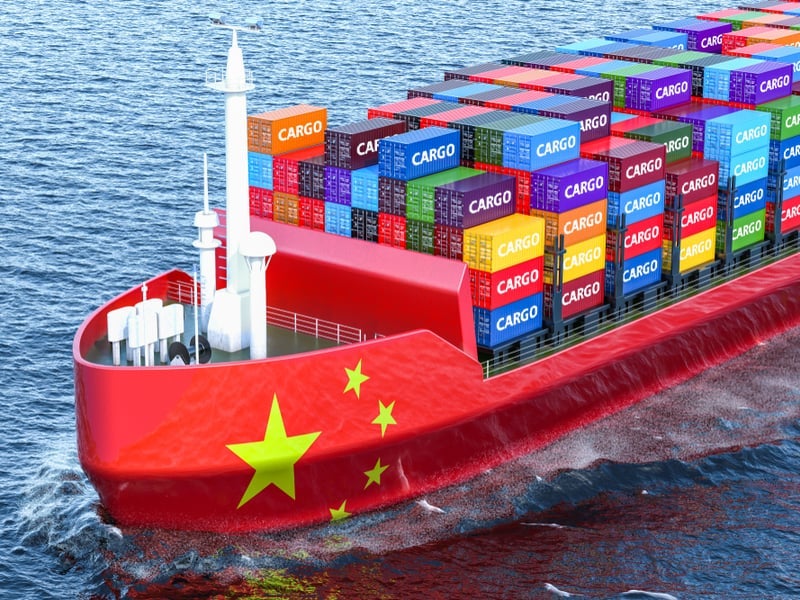The United States and China have agreed to restart trade talks, President Trump said Saturday at the Group of 20 summit in Osaka, Japan.
At a news conference Saturday, Trump said the U.S. would not impose any new tariffs on Chinese exports as the talks begin. After trade talks broke down on May 10, the Trump administration said it would impose 25 percent tariffs on an additional $300 billion a year of Chinese goods on top of the 25 percent tariffs already levied on $250 billion a year of Chinese imports in 2018 and earlier this year. China retaliated on May 13 by imposing new tariffs on $60 billion in U.S. goods.
Should the White House follow through on its latest threat, 25 percent tariffs would apply to the value of all Chinese imports to the U.S., which totaled $540 billion in 2018. The original 25 percent tariffs will remain in effect as talks resume, Trump said.
Trump said China agreed to resume broad purchases of American agricultural products and other goods, telling reporters that the U.S. would provide China with a list of what should be purchased. In a surprising move, Trump said U.S. companies could resume selling some equipment to Chinese telecommunications giant Huawei Technologies Co., Ltd., one of China’s most prominent companies and a leader in the development of equipment supporting next-generation 5G telecom networks. Trump said he wanted to aid U.S. companies that had been hurt by the ban.
Trump’s announcement on Huawei came less than two months after the Commerce Department put the company on a blacklist prohibiting American firms from selling equipment to Huawei. The move threatened to badly damage Huawei’s business because it relies heavily on American-made components. The U.S. government has long accused Huawei of being an untrustworthy agent of Beijing’s repressive regime.
“We discussed a lot of things and we’re right back on track, Trump said, referring to his talks with Chinese President Xi Jinping at the summit. Most observers had said the meeting in Osaka between the two leaders was the last best hope to avert the additional tariff levies on Chinese exports to the U.S.
China’s export activity to the U.S. has suffered greatly since the start of the year. Through April, the value of Chinese exports to the U.S. had dropped by $106 billion from the same period in 2018, according to data from the U.S. Census Bureau.
Though seen as more of a truce than a full-fledged breakthrough, the restart of trade talks at least provides a ray of hope for businesses struggling with the uncertainty of trade relations, and specifically how far Trump would go in punishing China through higher tariffs on all of its U.S. imports. FedEx Corp. (NYSE:FDX), a major global transport and logistics provider with a hub in the Chinese city of Guangzhou, said earlier this week that its fiscal 2019 fourth-quarter results, which covered the period from the beginning of March through the end of May, were affected by concerns over the trade outlook. Alan B. Graf, Jr., FedEx’s CFO, told analysts that the macro environment, which includes the murky bilateral trade outlook, remains the company’s biggest challenge.
FedEx is not alone. Since the beginning of the year, more than a quarter of Fortune 500 companies have mentioned the impact of tariffs on their earnings calls, according to an analysis conducted by the U.S. Chamber of Commerce. In addition, an increasing number of comments embedded in the Institute of Supply Management’s closely watched monthly report on U.S. manufacturing activity have focused on tariff-related concerns.
At the same time, FedEx executives said on their call that a resolution of the dispute would go far in improving the performance of its FedEx Express air and international unit, which has borne the brunt of the fallout from the trade dispute. Ibrahiim Bayaan, FreightWaves’ chief economist, shares that view. Bayaan told the SMC3 annual summer meeting last Tuesday that he could change his current gloomy view of economic and freight trends should the U.S. and China reach a trade agreement and avoid escalating their tariff war. Bayaan said he expects freight volumes to be essentially flat and truckload rates to decline year-over-year as carriers struggle with lingering overcapacity stemming from a response to strong freight demand during 2018.












David
Trade war will not end. It will last.